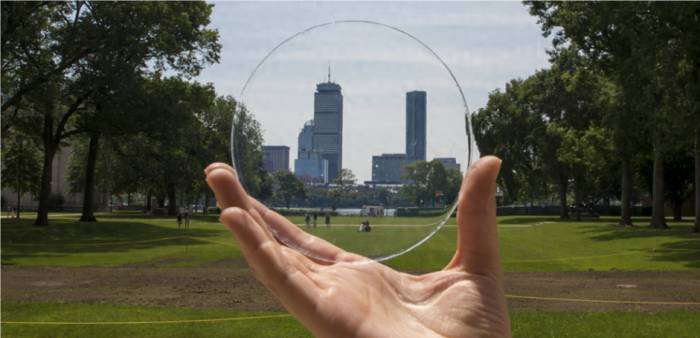Four companies receive more than $60 million in grants from the U.S. Agency, inc
Some people enjoy keeping track of sports scores or following the tour schedules of their favorite artists. But for me, I like to wait and see which climate tech startups have received government grants, so in fact, I am the same kind of person as them.
Every few years, this American agency, often referred to as the "energy moonshot factory," will grant subsidies to some companies to help them scale their technologies.
The official name of this American agency is the Advanced Research Projects Agency-Energy, or ARPA-E. These grants are intended to help companies move their technologies from the laboratory or experimental phase to practical application.
The latest batch of funded companies has just been announced, with four companies receiving more than 63 million dollars in funding. Let's take a closer look at the winners and consider the impact of each technology on their respective climate action fields.Antora Energy: Thermal Batteries for Industry
Let's begin with Antora Energy, a company based in California, USA, that is producing thermal batteries for heavy industry.
In 2023, I reported on the company and its first pilot project, and the thermal battery technology was the winner in the "Reader's Choice" category on our list of breakthrough technologies this year.
Advertisement
The fundamental concept behind Antora's technology is to store inexpensive, clean wind and solar energy in the form of heat, which can then be used in industrial facilities.
This is an excellent solution to address the issue of unstable renewable energy supply, and the industrial sector, which accounts for up to 30% of the global carbon emissions, needs a stable source of clean energy if it is to reduce its carbon footprint.Antora has secured $14.5 million to scale up its technology. The company hopes to use this funding to drive the development of its second product. This product will not only provide heat but also electricity.
Queens Carbon: Low-Emission Cement
As I previously reported, cement is a hidden climate change culprit right under everyone's noses. The production of these grey slabs that support our world accounts for about 7% of global emissions.
The challenge of making the cement manufacturing process cleaner lies in the fact that we need lava-like high temperatures to initiate the chemical reactions required to produce cement. The high temperatures referred to here are over 1500°C.Queens Carbon has developed a new process that reduces the required temperature to below 540°C. The company's CEO, CTO, and co-founder, Daniel Kopp, stated in a conference call that although the temperature is still high, it is easier to achieve and is accomplished using electricity.
Ideally, the electricity will be supplied by renewable energy sources, which could significantly reduce emissions.
Kopp mentioned in the meeting that Queens Carbon will also receive $14.5 million in funding. This funding will be used to build a pilot plant in collaboration with a cement producer. The company plans to expand to a full-scale factory by the end of 2028 or 2029.
Ion Storage Systems: The Next Generation of Batteries for Electric VehiclesThe whole world is seeking better batteries, and Ion Storage Systems, a company based in Maryland, USA, hopes to achieve this through its solid-state lithium metal technology.
We have listed lithium metal batteries as one of the top ten breakthrough technologies of 2021. This chemical substance can provide higher energy density, which means longer driving ranges for electric vehicles.
Ion Storage Systems plans to initially produce batteries for military customers. With $20 million in funding, the company may be able to provide larger-scale production technology for a broader customer base in the electric vehicle market.
I am very interested in hearing what the company's CTO, Greg Hitz, emphasized about the manufacturing industry at the press conference, as scaling up manufacturing is a significant challenge for other companies trying to make solid-state batteries.

Hitz also stated that the company's batteries do not require high-pressure squeezing or heating inside the battery, and they can be more easily integrated into battery packs.AeroShield Materials: High-Tech Insulation Materials for Construction
Closing the presentation is AeroShield Materials, a materials company.
The company's CEO and co-founder, Elise Strobach, stated during a press conference call that 30% to 40% of the energy used for heating and cooling buildings is lost through windows and doors. For residential buildings, this translates to an annual waste of approximately $40 billion.
AeroShield is manufacturing a material known as aerogel, which is transparent, lightweight, and fire-resistant. Strobach said that these materials can increase the energy efficiency of windows by 65%.Heat insulation may not always be the most exciting topic, but improving energy efficiency is one of the best ways to reduce the demand for more energy, and it is a very direct way to reduce emissions.
Streitbach said in a conference call that AeroShield is starting with windows and doors, but plans to explore other projects, such as retrofitting windows, as well as producing insulating materials for freezers and refrigerator doors. The $14.5 million grant will help it establish a pilot production facility.
These projects cover a wide range of fields such as transportation, construction, and heavy industry. They have one thing in common, that is, if the world is to address climate change, everyone urgently needs to make their actions cleaner.
Each of these subsidies is a vote of confidence from an institution with extensive experience in energy technology. But now, what really matters is what these companies will do with the money.